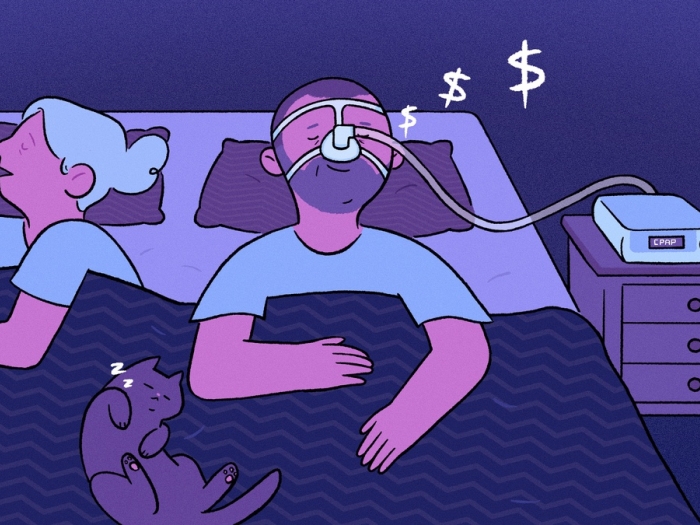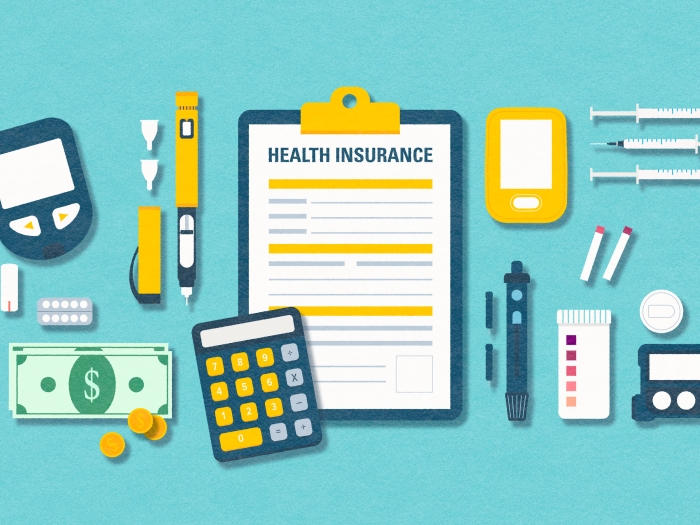You shouldn’t cut carbohydrates out completely. Here, a registered dietitian offers tips and a well-balanced recipe to try.
12:57 PM
Author |
When you think of carbohydrates, you probably think of bread, pasta and potatoes. But carbs are also in grains, legumes, starchy vegetables, milk, yogurt and fruit. They're one of the three main energy sources in our food and they provide the body's preferred fuel source for the brain, nervous system, and exercising muscle: glucose.
Unfortunately, patients with diabetes have difficulty converting that glucose into energy.
"The body needs the hormone insulin to convert glucose into energy, but for patients with diabetes, they either don't make enough insulin or the insulin they make doesn't work properly," says nutritionist Joyce Patterson, M.P.H., R.D.N., B.C.-A.D.M.
When glucose can't be used, it stays in the blood and results in high blood sugar. The worst offenders for these spikes are added sugars and refined grains, like white rice, and sugary beverages such as soda and juice. Patients with diabetes take medications to help increase their insulin levels or make insulin function properly so their bodies can get the energy it needs.
So if fat and protein are energy sources for the body too, why not just eliminate carbs from your diet? Well, there's a lot of reasons, actually.
"There's a common misconception that carbs are bad or should be cut out," Patterson says. "However, cutting carbs out can initially lead to uncomfortable side effects, like low energy and headaches."
In addition to glucose, carbs also contain other important nutrients. Fruit and starchy vegetables are rich in vitamins and minerals. Beans and lentils are an excellent plant source of protein, in addition to cholesterol lowering fiber, B vitamins, iron and calcium. Dairy provides protein, calcium and potassium. And finally, whole grains are a great source of fiber and B vitamins. "Cutting out all of these foods puts us at risk of nutrient deficiencies," Patterson says.
For those who take insulin or other medications that increase the risk of hypoglycemia, eliminating carbs, or even following a low carb diet, can lead to dangerously low blood sugar. So, having carbs in your diet is a good thing. Choosing high-quality carbs that are high in fiber and/or protein will provide the body energy without a large spike in blood sugar levels.
Low carb do's and don'ts
The Mediterranean, DASH or plant based diets have all shown benefits in people with diabetes beyond diabetes management, like lower cholesterol, better blood pressure and overall heart health, according to Patterson, also a diabetes educator in the Adult Diabetes Education Program.
She adds that the Mediterranean and DASH diet offer a great variety of foods with very little restriction – the emphasis being on portion control, balance and healthy food choices.
Similarly, plant-based diets offer many different plant sources of protein to replace animal products.
"Very low carb diets, like the keto diet, have also shown benefits for blood sugar. However, many find the lack of flexibility difficult to stick with, leading to frustration and yo-yo dieting, which can be harmful to health in the long run," Patterson says.
SEE ALSO: Keto Diets and Heart Health: What's the Risk?
To learn more about diabetes education and management, or gather a general understanding of how food affects medical conditions and overall health, seeing a registered dietitian can help explain how food choices, portions, balance and timing of meals can all affect blood sugar.
To apply some of that information to meal planning, try this budget and blood sugar friendly lentil stuffed peppers recipe.
"Lentils are a plant-based protein, rich in both fiber and protein which help keep blood sugar from rising too high or too fast after a meal," Patterson says. "Together with the sweet peppers and lean chicken, it's a well-balanced meal."

Budget friendly stuffed peppers
What you'll need
-
1 cup of red or brown lentils
-
2 cups of water
-
1 tablespoon of fresh, grated ginger
-
2 cloves of minced garlic
-
1 teaspoon of turmeric
-
1 pound of lean ground chicken
-
1 tablespoon of chopped fresh cilantro
-
1/2 teaspoon of salt (optional)
-
1/2 teaspoon of black pepper
-
1/4 teaspoon of cayenne pepper
-
6 small bell peppers
-
1/2 cup of low sodium chicken broth
Directions
-
Preheat oven to 350 degrees Fahrenheit.
-
In a medium sauce pan, bring the lentils, water, ginger, garlic and turmeric to a boil. Reduce to a simmer and leave partially covered for 20 minutes. Let it cool.
-
Mix the ground chicken, cilantro, optional salt, black pepper and cayenne pepper in a medium bowl while the lentils are cooking.
-
Cut the tops off of the peppers and set them aside for later. Remove all the seeds and line the peppers cut side up in a baking dish. If the peppers don't sit upright, trimming some of the pepper off the bottom can help make a flatter surface.
-
After the lentils have cooled, stir them in to the chicken mixture and mix well.
-
Gently fill each pepper to the top with the mixture. Do not pack the peppers tightly.
-
Place the tops back on the peppers and pour the chicken broth into the bottom of the baking dish.
-
Bake the stuffed peppers for 1 hour or until the internal temperature of the chicken mixture reaches 165 degrees Fahrenheit.
This recipe is endorsed by Joyce Patterson, M.P.H., R.D.N., B.C.-A.D.M. and can be found with additional nutrition facts at Diabetes Food Hub, the digital cooking and recipe destination from the American Diabetes Association.

Explore a variety of healthcare news & stories by visiting the Health Lab home page for more articles.

Department of Communication at Michigan Medicine
Want top health & research news weekly? Sign up for Health Lab’s newsletters today!





